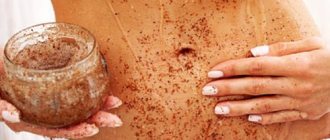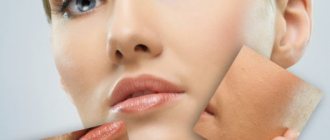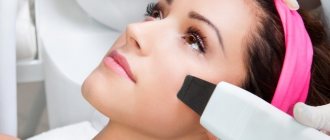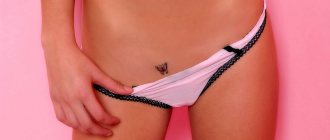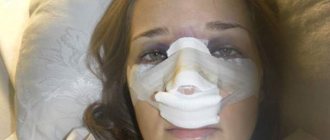Methods
The procedure has several ways of carrying out:
- Thermolysis is the use of alternating high-frequency current. The heat generated is directed directly at the hair follicle using a needle, resulting in its destruction.
- Electrolysis - a needle penetrates the hair follicle, a direct current acts - under its force, a sodium ion appears, which reacts with the fluid of the follicle tissue and destroys it.
- Blend is a combination of thermolysis and electrolysis. The method requires less time and shows greater efficiency.
- Sequential blend differs from the blend method only in the lower-frequency pulse of current amplitude, which reduces pain.
- Tweezers method - each hair is fixed with an electrode in the form of tweezers, and an electric current is transmitted through it, like a wire.
- Flash is an advanced thermolysis that uses direct current at very high frequencies to reduce pain.
- Sequential flush - uses alternating high-frequency sinusoidal electric current. This adds maneuverability to the electrode, allows you to remove hair of varying thickness without reconfiguring and increases the rate of destruction of the hair follicle.
With electrolysis, all options for regular hair removal are available - you can remove hair along the edge of the area, under a swimsuit or underwear, make a Brazilian version (popularly known as a deep bikini), partial removal anywhere in the bikini area, or even create designs from the hair. However, it is worth remembering that the pattern cannot be changed, only the hair can be removed completely.
Types and types of bikini electrolysis
Bikini electrolysis has several types:
Thermolysis is carried out using high frequency alternating electric current. It acts directly on the hair follicle through a very thin needle. In this case, strong heating of the follicle occurs, which leads to its death. The hair is then removed painlessly.
A negative property of the method is the inaccuracy of the impact of current on curved follicles. In this case, the current does not affect the bulb, but the tissue located near it.
The next type is electrolysis. During the session, direct current is used. The needle is inserted into the hair follicle, which produces a sodium ion. It reacts with tissue fluid and destroys the follicle.
With this method, even crooked hair follicles are destroyed.
The procedure has one drawback - it takes a lot of time.
There is a session in which electrolysis and thermolysis are used simultaneously - a blend. It takes much less time and is more effective.
In the bikini area, hair removal can have several options:
- Simple hair removal, which is carried out along the edge of the zone. It's great for the beach.
- Deep hair removal, or Brazilian. With this option, hair is removed over the entire surface of the bikini area.
- Epilation takes place over the entire groin area, without affecting the pubic area.
Examples of processing the bikini area are shown in the photo.
Advantages and disadvantages
The main advantage over laser, photoepilation or other types of hair removal is that after treatment with electric current, hair will never grow back. It won't get damaged, get thinner, or die over time, it just won't grow back.
But this is not an exclusive advantage:
- Removal of hair of different colors and thicknesses. Thus, gray and very light hair, vellus hair, cannot be treated with laser hair removal.
- Applicable to men and women.
- curved are destroyed by electrolysis .
- ingrown is reduced .
- It is considered the most secure of the hardware methods.
- When performed correctly, there is no feeling of discomfort after the session.
- The skin quickly regenerates without any marks.
- The price category is accessible to almost all segments of the population.
- Suitable for all types .
- The procedure has the longest-lasting effect of no hair growth used in cosmetology.
- It can be used not only in the bikini area, but also on any part of the face and body, except for the armpits due to the proximity of the lymph nodes.
- The tweezers method can be used for areas with particular sensitivity (deep bikini, upper lip, neck).
On this topic
- Electrolysis
Pros and cons of electrolysis
- Inna Viktorovna Zhikhoreva
- October 15, 2020
There are disadvantages to each type of electrolysis:
- Painful sensations from electric shocks. (With a high pain threshold they are not felt). The skin in the bikini area is very thin and delicate, so you need to be prepared for unpleasant sensations.
- Electrolysis of the bikini area using electrolysis takes a very long time.
- With curved follicles, the needle may miss and affect the tissue near the bulb, and not the bulb itself.
- The procedure may not cope well with deformed bulbs, which will increase the number of sessions.
- The long stretch of time from the start of sessions to obtaining the desired result is sometimes annoying.
- The tweezer method is not used for areas with thick hair, as it takes about two minutes to remove one.
Many of the advantages and disadvantages of the method are purely individual and strongly depend on the methods of hair removal performed previously, the properties of the skin and the capabilities of a particular organism.
What is electrolysis of the deep bikini area?
Electrolysis is a scientifically proven way to get rid of hair forever. Due to the peculiarities of the process technology, absolutely all areas are available for the electrical hair removal method, there are no restrictions on hair color.
The essence of the procedure is that the hair follicle is exposed to high-frequency current, thus destroying the growth point. The method was invented more than 140 years ago by the American ophthalmologist Charles Michel. A method was used to remove ingrown eyelashes.
Very soon cosmetologists adopted the method for their practice. Due to the fact that work is carried out on each hair separately, there are no hard-to-reach places for electrolysis.
Pros of the procedure:
- It makes no difference what causes hair growth, hormonal imbalance or hereditary characteristics. The procedure is equally effective for all cases.
- The effectiveness of the procedure does not decrease depending on the characteristics of the skin and hair pigmentation.
- The problem of ingrown hairs is absent and simply impossible with electrolysis of a deep bikini.
- Ability to remove hair in the most delicate areas.
- Possibility of radical elimination of the problem of “excess hair”.
The technique is also suitable for treating areas with high sensitivity, for example, for electrolysis of a deep bikini.
Preparation
Preparing for the procedure will not take much time, and for some it will even simplify daily hygiene, since you cannot use wax strips or an electric epilator, and shaving your hair is also prohibited. To successfully complete the procedure, a hair length of 2 to 5 mm is required, so you need to either shorten what you have or not shave for several days.
General recommendations for preparation:
- Do not take hormonal medications for about a week. When taking hormonal contraceptives, it is best to carry out the procedure after the end of your period and before starting a new cycle of pills.
- A week before the session you should not visit baths, saunas, solariums or sunbathe on the beach.
- On the day of the procedure, during morning hygiene procedures, you should treat the skin in the planned intervention area with a scrub.
- A few days before the event, examine the treatment area and eliminate ingrown hairs without pulling them out.
With proper preparation and following the recommendations, hair removal will take place with minimal consequences, or even without them at all.
Preparatory stage
Unlike other hardware hair removal methods, electrolysis does not require prior preparation. The only rule that cosmetologists recommend following is to stop tanning 5-7 days before the session. The client should also take into account that on the day of the event, the length of the hairs should be about 3 mm, so 2-3 days before the session it is necessary to depilate using a razor.
To achieve the best effect, on the day of the procedure, the skin in the intimate area should be scrubbed using a special product recommended by the specialist.
How much bikini electrolysis will cost depends on where exactly the procedure is performed, as well as on the qualifications of the specialist and the quality of the equipment used.
The approximate cost of one minute of processing is about 35 rubles. Hair removal in the deep bikini area takes 3-4 hours, since each hair is processed separately.
Progress of the procedure
To carry out the procedure itself, different needles are used:
- for women with a low pain threshold - needles made of nickel-chromium alloy;
- for normal and high thresholds - Teflon-coated needles;
- for delicate skin prone to rashes and allergic reactions - golden needles.
On this topic
- Electrolysis
All about electrolysis of the upper lip
- Inna Viktorovna Zhikhoreva
- June 14, 2020
After selecting materials, work begins with the declared zone.
- The bikini area is treated with an antiseptic to prevent bacteria from entering the follicles.
- Anesthesia is performed with a cream or an injection with a local drug is given. (Carrying out the procedure after menstruation will also reduce pain). Allergic reactions to components of painkillers should be warned in advance. You also need to know that the thinner the skin and the closer the location of the hair follicle to the nerve ending, the more painful it is. That is, even an injection of painkiller does not always relieve discomfort.
- Then the procedure itself is performed. During it, be sure to hold the electrode in your hand, which will be given by the cosmetologist. This will protect against electric shock when affecting the bulbs and follicles.
- Treated hairs are removed Tweezers are used and the process is completely painless.
- is re -treated with an antiseptic to minimize the risk of infection and skin irritation.
At the end of the procedure, you need to dress carefully, without disturbing the bikini area, and familiarize yourself with subsequent skin care; many cosmetologists provide instructions on this topic.
How is the procedure done?
Electrolysis is a fairly lengthy procedure. This is due to painstaking and targeted influence. Each hair is removed individually, which means that processing even one area will require a certain amount of time. However, when working with areas on the face, this fact, as a rule, is not decisive.
No special preparation is required for hair removal. About a week before the procedure, you should reduce the amount of time you spend in the sun and start using cosmetics with a high sun protection factor. Approximately 3 - 4 days before the visit to the specialist, unwanted hairs are shaved off so that they have time to grow to a length of 3 - 3.5 mm. Additional preparatory measures include cleansing the problem area of the skin from external contaminants using soap, scrub and water.
Reviews of the procedure often indicate that it is extremely painful. This information is especially relevant when working with delicate and sensitive facial skin. To relieve discomfort, the patient has to undergo local anesthesia using special creams or injections (the latter option is more effective and therefore more preferable).
Pain usually manifests itself when an electrical impulse is generated; dead hair is removed with absolutely no discomfort. While the sensor is operating, the patient holds an additional passive electrode in his hand; this requirement is one of the most mandatory.
The procedure is carried out in a course consisting of several sessions. Usually, to achieve a permanent, pronounced effect, it is enough to undergo from 5 to 7 procedures with a break of at least 30 days, but no more than 2 months. Noticeable changes are formed already at the first visit to a specialist.
Skin care after the procedure
In order to minimize discomfort after electrolysis, you need to carefully care for your skin and follow some recommendations:
- Treat the area disinfectant (chlorhexidine or alcohol solution) several times a day. Calendula tincture lotions are also suitable.
- Do not visit the gym , sauna, bathhouse, swimming pool, or take a bath for 24 hours after the session.
- Do not scrub your skin during hygiene procedures.
- Avoid deodorants, talcs, and creams for several days.
- Do not rub or scratch itchy areas.
- Do not visit a solarium or use self-tanning for two weeks.
If you follow these recommendations, all the consequences will disappear and the skin will be completely restored within a week.
Is electrolysis acceptable in the bikini area?
Electrical hair removal is a method of influencing hair follicles with weak discharges of electric current. As a result, they are destroyed and then not restored. The method is applicable to removing hairs of any color, length and thickness. But unlike laser or photoepilation, it is necessary to act on each hair individually. Therefore, the procedure proceeds slowly - in an hour of work, an experienced specialist can clean an area of skin up to 1 dm2 in size.
Depending on the hormonal characteristics of the body, a course of 8 to 10 procedures is required to completely get rid of hair. Electrolysis of the bikini area cannot be considered a painless method. And although the method does not pose any danger to health, not every woman has the patience to complete the course completely. However, a course of procedures completed to the end guarantees complete removal of unwanted hairs forever. At the same time, the risk of infection is minimal.
Consequences
The consequences of electrical hair removal can be not only positive, but also negative. Manifestations such as swelling, bruising, scars (signal about incorrect selection of discharge power), reddish spots (quickly disappear), acne and itching in the bikini area (a natural reaction of the skin to exposure to electricity; scratching is strictly forbidden, as the itching will only intensify and may scarring) are called complications.
They are provoked by interference with the natural processes of hair growth, the actions of a doctor, or the skin’s own properties and reactions.
Possible consequences of facial electrolysis
Electrolysis is a safe procedure, but it must be performed by an experienced specialist. Only in this case everything will go away with minimal pain and without consequences. Sometimes this hair removal can have a bad effect on a woman’s appearance and health. The following consequences may occur:
- Scars and spots. This is a minor thing that can happen, usually the scars heal and the spots go away within two to three weeks.
- Allergic reaction, itching. Such a reaction is possible and it passes quickly.
- Infection. The most dangerous thing that can happen. If the specialist performed the removal incorrectly or used uncleaned instruments, the client may get an infection that will need to be treated.
Clients often complain of burns, this is due to the fact that the skin was not prepared for exposure to current, so carefully choose the specialist and the method of electrolysis.
After electrolysis, spots, pimples or scars will appear - this is normal, but if you do not take care of your skin, this can turn into a big problem. Therefore, follow the instructions that the cosmetologist will tell you.
Contraindications
Each medical procedure has its own contraindications, and electrolysis is no exception:
- inflammation of the skin in the treated area;
- any types and stages of tumor development;
- epilepsy, mental disorders;
- pregnancy and lactation;
- viral and infectious diseases, as well as skin diseases, the course of which is provoked by stress;
- skin is prone to the appearance of colloidal scars;
- allergic reactions to metals and alloys from which the instruments for the procedure are made;
- diseases of the heart and blood vessels;
- a heart pacemaker has been installed ;
- the presence of metal objects or implants in the body;
- intrauterine device (for deep bikini treatment);
- hemophilia, hepatitis;
- varicose veins in the epilation area;
- hormonal diseases and disorders of the body.
If the presence of hair is caused by a hormonal imbalance in the body, the chances are quite high that any hardware hair removal will not help get rid of them, so you must first undergo treatment and only after complete recovery think about electric hair removal.
If any item from the above list is present, you should refuse the procedure or postpone it until the contraindications are eliminated.
The decision to permanently get rid of unwanted hair will free you from constant hygienic procedures for removing unwanted hair. The method and method of disposal should be chosen based solely on your capabilities, preferences and the presence of contraindications.
Before signing up for a procedure at a salon, you should familiarize yourself in detail with the methods, processes and all the nuances, as well as consult with a doctor and cosmetologist.
After consultations, you can take a trial session. Select a small area of skin, preferably invisible to others, and remove hair using electrolysis. After it, it will be possible to evaluate the aesthetics of the action, skin reactions, selection of current strength and all possible side effects and complications.
You should not try a new cosmetic hardware procedure on a large area at once, it will be expensive, and the effect may not live up to expectations. During a trial session, you can also evaluate pain and time, think about the size of the subsequent treatment area and your own sensitivity, besides, the result largely depends on the cosmetologist who performs the procedure.
Disadvantages of laser hair removal:
- The duration of the process of getting rid of hairs above the lip. Despite the fact that the session itself takes little time, in order to completely get rid of vegetation, it may take up to 10 sessions, between which 6 to 8 weeks should pass. So you will not get the result you need right away. In addition, during this period of waiting, new hairs may appear that cannot be removed by other methods. You just have to trim them with nail scissors.
- "Selectivity" of the laser. Unfortunately, it does not always cope with light or gray hairs.
- The laser only affects hairs at the growth stage.
- There are a number of restrictions that you will have to take into account after the procedure: for example, you should not sunbathe or visit a solarium for a couple of weeks after hair removal.
- The ideal time for the procedure is autumn, as pigmentation may appear in summer.
- If you have dark skin, then the procedure should be performed using a diode laser.
Recommendations:
Those who have enough time should choose the laser hair removal procedure. It is ideal for those with dark mustaches. But those who have gray, blond, red and vellus hair should think about a different hair removal method.
Aftercare for hands and feet
After each hair removal procedure, aftercare measures are necessary. Namely:
- After electrolysis of legs, shins, arms and other areas of the skin, do not touch, rub, scratch or wet the treated area for 26 hours.
- Do not allow sweating in the treated area. Since open wounds remain at the site of electrolysis, any entry of foreign bacteria can lead to serious complications.
- To reduce the risk of infection, you should treat the skin with Miramistin, Chlorhexidine, and Levomekol ointment. It is recommended to check before purchasing to ensure that the composition does not contain alcohol or fragrance.
- A day after electrolysis of the legs, crusts and irritation will appear at the treatment site, swelling and redness may appear. To relieve irritation and swelling, it is worth treating the crusts with Panthenol ointment, Bepanten, and Rescue balm. Do not remove or tear off the scabs to avoid skin infection, pigment spots and not disrupt skin healing.
- It is not recommended to allow the treated leather surface to come into contact with soap, cleaning agents and lye.
- The treated area should be protected from direct sunlight, moisture and sweat for 74 hours after electrolysis of the legs.
After reading the recommendations of salon specialists, it becomes clear how to prepare for electrolysis of the legs. Now it is clear how such manipulations are carried out. Under what conditions this method should be abandoned is also known.
Procedure
The electrolysis procedure begins with the patient’s answers to the cosmetologist’s questions in order to prevent all possible consequences due to contraindications not identified before the start of work. Pain relief is then performed using injections or using freezing aerosols or creams. The affected area is carefully treated with antiseptics.
Preliminary preparation and anesthesia
It is recommended to prepare for hair removal in the bikini area in advance. Hair should not be shaved. Their length should be more than 2 mm at the beginning of the procedure. At least 3-4 days should pass between the last shave and the electrolysis session. Hair that is too long and will block your view must be shortened. You cannot do sugaring or waxing or use electric epilators before starting the course. Before electrolysis on the labia and pubis, peeling is necessary if the skin is dry. Oily skin should be cleansed with lotion before the procedure. For normal skin, a warm shower immediately before the start of the session is sufficient.
The choice of pain relief method depends on how high the patient’s pain threshold is. Most often, lidocaine injections are necessary. But if a woman is not susceptible to pain, treatment with a generous amount of cream or spray containing lidocaine will be sufficient.
It is equally important to carry out final treatment, since there is a possibility of infection through clothing while the patient is on her way home.
How is unwanted hair removed from the intimate area?
A special very thin needle is applied using a manipulator to the bulb of each hair in turn. An electrical discharge is produced. Only disposable needles are used for electrolysis of the bikini area. The cosmetologist conducting the session opens the package in the presence of the patient.
The duration of treatment is directly related to the woman’s patience. Since the effect of the anesthetic gradually wears off during the procedure, repeated anesthesia during the same session is not recommended. On average, one procedure lasts from 1.5 to 2 hours. For patients with a high pain threshold, longer sessions are possible, but no more than 4 hours.
After exposure to electric current, the “killed” hairs are removed with tweezers. Once again, an antiseptic treatment is performed, and an anti-inflammatory agent (ointment or cream) is applied to the skin. For several days after the procedure, needle marks are clearly visible on the skin. Many women who see the results of bikini electrolysis in photos taken immediately after the session have doubts about the correct choice. But if you strictly follow the cosmetologist’s recommendations, everything heals quickly and the skin becomes smooth and clean. When patients are shown photos of bikini electrolysis before and after undergoing a full course of procedures, all doubts disappear.
Skin care after the procedure
Proper care after electrolysis of the bikini area is very important. A woman must strictly follow all the cosmetologist’s instructions in order to avoid unwanted side effects:
- Until all traces of the needle disappear (from 2 to 7 days), you should not touch the skin with unwashed hands.
- Clothes should not fit too tightly to the body. It's better not to wear synthetics.
- Until complete healing, it is not recommended to take a hot shower, visit the pool, beach or solarium.
- During the first 24 hours after the procedure, it is advisable to completely prevent water from entering the treated area of the skin.
- It is not recommended to use deodorants and eau de toilette.
- The use of antibacterial wet wipes containing fragrances should also be avoided.
Between sessions of electrolysis of the intimate area, hairs will grow back, the follicles of which were in a “dormant” state at the time of the procedure. They can only be removed between procedures with scissors or a razor.
Skin preparation
The answer to the question of how to properly prepare for electrolysis is closely related to your skin type. The preparation is slightly different for different types.
- If you have dry skin, then the day before electrolysis, do a light peeling of those areas of the body where you plan to remove hair. Apply cream for dry skin. This is necessary in order to remove dry scales that interfere with hair removal.
- If your skin is oily, you should clean it the day before hair removal using lotion or another product.
- For those with normal skin, it is enough to take a warm shower before the procedure.
To keep your skin well hydrated, drink more water and juices, but drink coffee, tea and alcoholic drinks in limited quantities.
Skin after electrolysis – what is normal and what is not
Last update: 12/27/2019
What a nightmare! How my face was blown apart after the procedure, there was no living space. And then there are some red dots, crusts. And how can I now show myself to honest people? I wonder how long all this will last? What if it's forever? So I removed a couple of hairs. It’s my own fault – I decided to finally deal with the vegetation. I could keep pulling!
Quite a few clients will find such a monologue painfully familiar. It’s also good if we are talking about a hidden area, but what to do with the face – you can’t really hide it.
A frantic search begins on a wide variety of sites, forums, conversations with all-knowing friends who must certainly give advice.
All this is followed by active self-medication with a wide variety of lotions, rubbings, folk remedies and a solemn promise to quit this terrible treatment forever!
Aggressive methods of such therapy often provoke real complications on the surface, the addition of inflammation with other unpleasant phenomena.
And if someone told our good friend that everything was quite fine with her, and she just needed to give her body the opportunity to put itself in order, there wouldn’t be many difficulties. This is what we will do below.
Let's try to figure out what happens after the session. Why do we see this or that picture? Is this normal or is it time to sound the alarm? And, of course, what to do with all this?
Photos from our collection
Electrolysis is a controlled trauma to the skin
Let's start with the understanding that eliminating vegetation with current is aimed at the complete destruction of not only the bulb itself, but also the nearby stem cells, as well as the tiny capillaries that feed the entire structure.
In a word, the task of electrolysis is to destroy the “unwanted enemy” in the bud in the literal sense of the word.
It may be the formation of alkali or scorching heat, but the result will be the same. That is, there is a slight and controlled trauma to the skin.
Therefore, expectations of a flawless and dazzlingly beautiful appearance after treatment will not only not be justified, but should not be.
Why? Because if after the session you left the specialist’s office looking “beautiful”, it means that most likely the treatment was in vain and the money was wasted.
The parameters were set incorrectly and the elements were not processed properly. It is important for us to see traces confirming healing and restoration of the tissue.
But what determines the degree of their expression, duration of existence and quantity?
- Location. According to the law of meanness, everything will be more visible on the face than, say, on the lower leg. This happens not only due to openness, but also due to greater sensitivity, active blood supply and densely populated vegetation.
- Healing ability. Here, too, sometimes it can be a shame - everything on your neighbor heals instantly, but your tiny pimple just doesn’t want to go away, and will definitely leave a stain behind for many weeks. General health and hydration will play a significant role in the speed of regeneration.
- Type of electrolysis. It is known that electrolysis is less painful and more gentle compared to its counterparts.
- Duration of the procedure. Everything is clear here - the more specimens destroyed, the stronger the injury and the more noticeable the reaction.
- Frequency of clinic visits. It’s also quite logical - the more often the visits, the less time the body has to heal itself.
- Climate. What does this have to do with it? But in a hot and humid area, a person sweats more actively, and accordingly, there is a high chance of bacteria attaching and infection. In such weather conditions, the entire healing process will take longer.
- Cloth. Carefully covered with many layers of matter, the impact zone will experience friction, which, in turn, will interfere with recovery. The same reason often leads to the development of inflammation.
- Your behavior before and after treatment. We are not talking about moral character at all, but about self-care. Following important recommendations will minimize any manifestations.
Having understood the factors that directly influence the manifestation of the consequences, now it is time to clarify the critical issue - the difference between the norm and the complication.
The difference between normal and complication after electrolysis
Removing the sprout permanently
Just like that. Hair will never grow again. And this is the main side effect. Whether this is normal or not is up to you to decide.
Pain
What's expected? A slight burning sensation, a “pinching” sensation, a “rubber band” click. All sensations should cease immediately after exposure. Severe and acute pain, intense burning indicate incorrectly set parameters. Let your treating cosmetologist know about this immediately.
Redness
That's how it should be. The injured area needs an active influx of ingredients for recovery. In response to this demand, local blood vessels dilate, facilitating the flow of components for the construction of new structures.
Externally, this is expressed as a change in color. The duration of this reaction is quite individual: from half an hour to a day.
In addition, a similar phenomenon can also be caused by an allergic reaction to the material of the needle probe.
In such a situation, you will probably also experience varying degrees of itching. Using gold tips will help resolve the issue.
What to do? Good old ice will come to the rescue due to mild pain relief and vasoconstriction. Antihistamines are a good solution in case of intense itching.
Edema
The mechanism of occurrence is the same as above, but the vessels react at a deeper level, increasing blood flow.
Externally, these may be limited “pimples” around the mouth of the hair, or, in the case of sensitive characters, the entire treatment area swells.
This can all last from several hours to a day after treatment.
Sometimes, due to increased blood flow, small vessels cannot withstand the pressure and are damaged. This will appear externally as a bruise.
What should I do? Despite the seemingly scary picture (some people think they look like monsters), this is still the absolute norm.
Ice compresses will come to the rescue. It is also important to calculate the time so that you do not have to rush headlong to an important public speech or an important meeting.
If the hair mass is thick enough, the cosmetologist may begin by thinning it to minimize inflammation. This is especially important for therapy on the face.
Crusts
More popularly known under the code name “sores”. At this point it is important to understand one point.
The next day after a visit to your favorite specialist, whitish-yellow elements like acne may pop up. Representatives of oily skin are given similar gifts.
This is nothing more than the contents of the sebaceous glands on the surface. After washing, they disappear, giving way to “lids” that protect the wound from pathogens.
These “comrades” need to be protected. Ripping them off is fraught with unpleasant consequences in the form of infections, pigmentation, and even scars.
But the use of healing compounds like Bepanten, Panthenol and others is very desirable.
Bruises
We have already found out one reason for the appearance of these “beauties”. Another culprit would be the impact of the blood capillary feeding the root.
Another factor may be a specialist who has gone into a frenzy and is trying to fix the tissue too intensively. This should not be the case, and the person in charge needs to reconsider the strength of their pressure.
Salicylic acid preparations (aspirin) promote bleeding and will increase the chances of getting a similar picture.
Naturally, it will take some time for the spot to lighten. Preparations with arnica extract will speed up the process.
Dryness, itching
A small number of people may notice this effect after using electrolysis. This is due to the effect of alkali on the epidermis. At this stage, all care products should be as gentle as possible, without alcohol, fragrances and other aggressive substances.
The appearance of herpes
Of course, electrical interventions, if all standards are observed, can in no way “reward” a person with the virus, but can intensify an existing infection.
The use of antiviral ointments before the visit will reduce the likelihood of the formation of herpes elements.
Scarring
Replacement of normal skin with fibrous tissue. Occurs when there is excessive trauma, when the body is no longer capable of normal regeneration.
With proper treatment, this outcome is completely excluded.
Scars indicate incorrectly set parameters and inexperience of the treating specialist.
Tearing off crusts, improper care, and the addition of bacterial flora have a similar effect. We will be able to see real scars only after 6-12 months.
Pigmentation disorder
Discoloration may occur in those with sensitive skin. There is a term - post-inflammatory hyperpigmentation.
Surely you have witnessed the healing of a pimple, which was gradually replaced by a rather stable spot.
The same mechanism is present after electrical intervention.
But there is good news - the surface will return to normal after a certain time. Restoring normal color may take from 3 months to 2 years.
The use of acid peeling under the careful supervision of a professional can significantly speed up the process.
Interestingly, in dark-skinned individuals, the color can change towards lightening.
Photos from our collection


